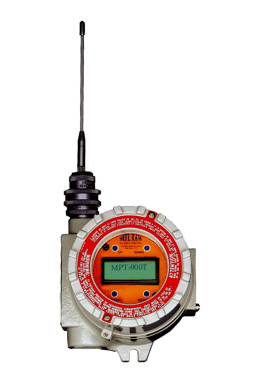Telemetry Receivers and Telemetry Transmitters Information
 Telemetry receivers and telemetry transmitters are data acquisition components used to gather information from remote locations via wireless communication. Telemetry receivers and telemetry transmitters can be produced as separate receiver and transmitter units, or combined into a device known as a transceiver.
Telemetry receivers and telemetry transmitters are data acquisition components used to gather information from remote locations via wireless communication. Telemetry receivers and telemetry transmitters can be produced as separate receiver and transmitter units, or combined into a device known as a transceiver.
Features
Telemetry receivers and telemetry transmitters have several performance characteristics, including:
- operating frequency, which is the range of broadcast and received signals
- measurement resolution, which is the minimum digital resolution
- maximum transmission distance, which is the maximum distance that the transmitter and receiver can be separated and still communicate
- data rate, which is the amount of data in bits per second that can be transmitted
- and output power, which is the maximum signal power that a device can transmit
Telemetry receivers and telemetry transmitters are also differentiated by the type of communication interface used to output the data to a computer, and include parallel or serial interfaces.
Types of Connectors
Telemetry receivers and telemetry transmitters use many different types of connectors.
Bayonet Neil-Concelman (BNC) connectors were designed for military applications, but are used widely in video and RF applications to 2 GHz.
Threaded Neil-Concelman (TNC) connectors are similar in size to BNC connectors but feature a threaded coupling nut for applications that require performance to 11 GHz.
Miniature coaxial (MCX) connectors provide broadband capability through 6 GHz and are used in applications where weight and physical space are limited.
Micro-miniature coaxial (MMCX) connectors are smaller than MCX connectors and feature a more robust interface for greater durability.
Subminiature-A (SMA) connectors are intended for use on semi-rigid cables in components. Reverse SMA (RSMA) connectors have reverse polarity.
Subminiature-N (SMB) connectors are snap-mount connectors that are available either in 50-ohm or 75-ohm impedances. Subminiature P (SMP) connectors are rated to 40 GHz and, depending on detent type, can withstand from 100 to 1,000 interconnect cycles.
Other connectors for telemetry receivers and telemetry transmitters include UHF connectors, mini-UHF connectors, Type F connectors, and Type N connectors.
Specifications
Telemetry receivers and telemetry transmitters come in a variety of configurations. The electronic components may be assembled using surface mount technology, where the telemetry receiver and telemetry transmitter components are soldered on to a printed circuit board; or by using through-hole technology, where the components are secured on to a printed circuit board by inserting component leads into holes in the board and soldering them into place on the back side of the board. Other configurations include flat pack, which involves securing component leads on two or four sides using the surface mount technique and rack mounted or standalone devices.
Applications
Telemetry receivers and telemetry transmitters are used in all kinds of industries to transmit and receive radio signals from different devices. Wireless telemetry equipment is used in cellular phones and wireless local area network (LAN) applications. Satellite telemetry equipment is frequently used in aerospace applications, such as relaying information from orbiting spacecraft back to mission control, or to provide communication for global positioning systems.
Related Information
IEEE Spectrum—The Great Radio Spectrum Famine
Image credit:
- AC Power
- Adjustable Output Power
- Amplitude Modulation (AM)
- Amplitude Shift Key (ASK)
- Antenna Connector
- Connectorized
- Current Input
- DC (Battery) Power
- Data logging
- Direct-Sequence Spread Spectrum
- Frequency Modulation (FM)
- Frequency Shift Key (FSK)
- Frequency-Hopping Spread Spectrum
- LED Indicators
- Military / Defense
- Mobile / Wireless Systems
- On-Off Key (OOK)
- Outdoor Use Rated
- Phase Shift Key (PSK)
- Rack Mount
- Receiver Only
- RoHS
- SMA
- Sensor Excitation
- Serial Interface
- Stand Alone
- Strain Gage / Bridge
- TNC
- Thermocouple
- Transceiver
- Transmitter Only
- Type N
- Visual Indicator
- Voltage Input
